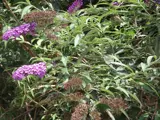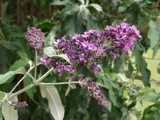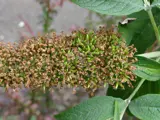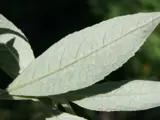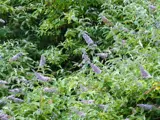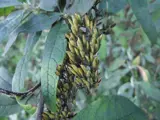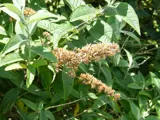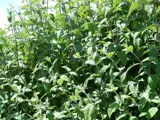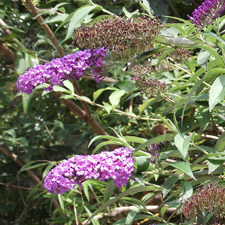 Buddleia
Buddleia
Common name: Buddleia
Botanical name: Buddleja davidii
Management programme: Advisory
Buddleia is originally from China. It was introduced to New Zealand as an ornamental plant and was recorded as naturalised in 1946.
Why is it a pest?
- Establishes and grows quickly in a wide range of habitats and forms self-replacing thickets.
- Often forms in river beds which can alter water flow, causing silt build-up and flooding.
Where is it found?
River beds, streamsides, disturbed forests and shrublands and margins, bare land.
What does it look like?
- Deciduous (occasionally semi-evergreen) open, multi-stemmed shrub up to 3m tall.
- Stems are bluntly angled, clad in tufts of easily removed soft, woolly hair and becomes lax when long.
- Thin, willow-shaped leaves are usually hairless above, white or hairy grey underneath, and finely toothed.
- Distinctive, dense, cone-shaped hanging clusters made up of many fragrant purple or white flowers, from December to February, with orange insides are followed by seed capsules.
What are the rules?
Advisory
Council does not enforce the control of advisory species. It is landowner/occupier responsibility to manage these pests. Council may provide advice on how to manage or control advisory species if required.
How do you get rid of it?
- Hand-pull (all year) – leave on site to rot down
- Dig-out (all year) – leave on site to rot down
- Drill and fill
- Frilling
- Spray
CAUTION: When using any herbicide or pesticide, PLEASE READ THE LABEL THOROUGHLY to ensure that all instructions and directions for the purchase, use and storage of the product, are followed and adhered to.
Read more on pest control advice, information and regulations.
Images

